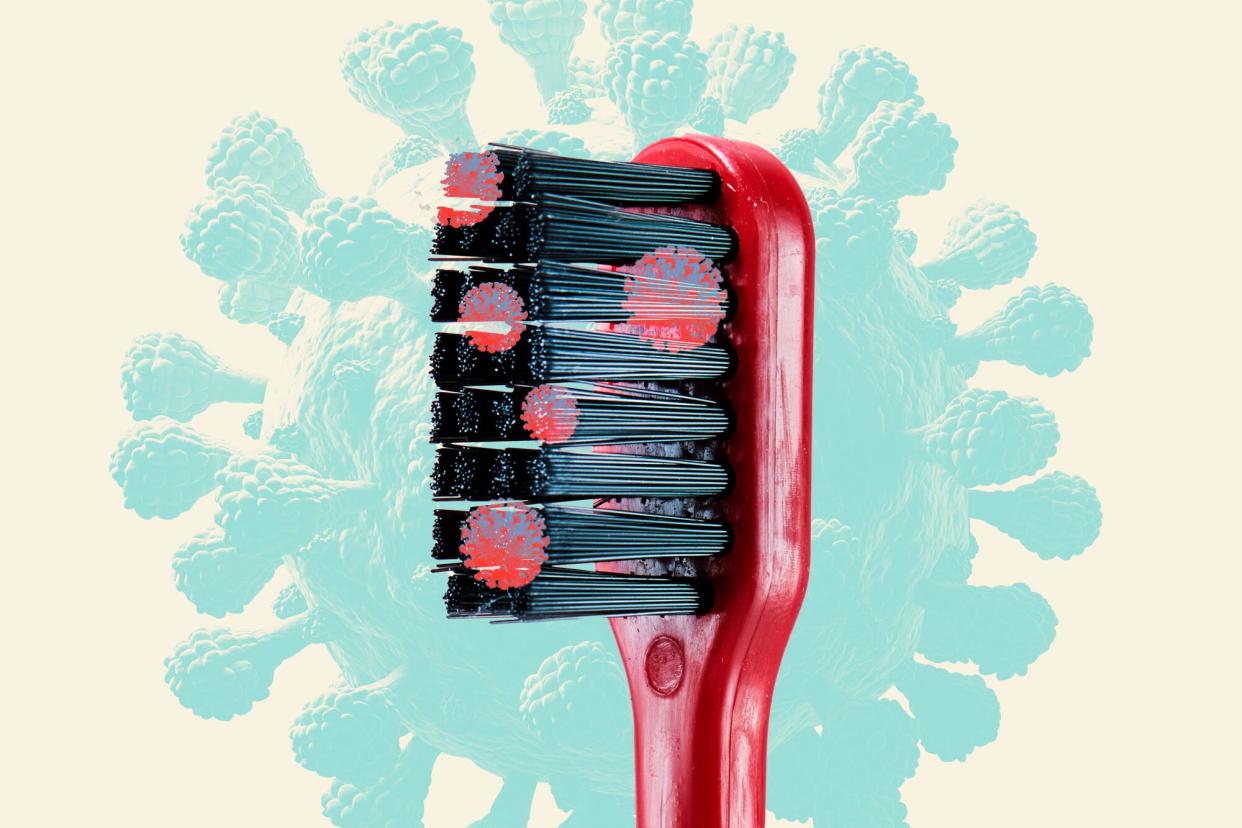Should You Throw Away Your Toothbrush After Having COVID-19?

Getty Images / Shana Novak / Radoslav Zilinsky. / Yuichiro Chino
I recently had COVID, and even though I had a mild case, I was pretty sick (you can read more about my experience here). After I recovered, I had some pressing questions like: "How exactly should I disinfect my house?," "Will I ever be able to walk up my stairs again without feeling completely winded?" and "Should I throw away my toothbrush?"
Related: Will Everyone Eventually Get COVID-19?
The last question stumped me the most, because I typically always toss my toothbrush after a bout of sickness. But since COVID-19 is a newer (and seemingly always-evolving) virus, I wondered if the toothbrush-tossing guidance was any different. I asked Bertha Hidalgo, Ph.D., M.P.H., an associate professor of epidemiology at the University of Alabama at Birmingham, to weigh in.
Hidalgo says, "The SARS-CoV-2 virus [which causes COVID-19], including the omicron variant, is not very stable on surfaces. However, it is always a good idea to change toothbrushes or toothbrush heads after illness." The Centers for Disease Control and Prevention adds that the SARS-CoV-2 virus can survive for up to three days on common nonporous surfaces. So once you've recovered (or after about 10 days since you tested positive), it's worth swapping out your toothbrush for a new one—especially if you share a toothbrush holder with another person.
In case you need a little more motivation to pick up a new toothbrush or swap out your toothbrush head, the American Dental Association recommends replacing yours every three to four months (which most Americans are not doing often enough). Need to restock? These five replacement toothbrushes and toothbrush heads all get a seal of acceptance from the ADA.
Available at Amazon
Available at Amazon
Available at Amazon
Available at Amazon
Available at Amazon
The situation surrounding COVID-19 continues to change quickly; it's possible that information or data has changed since publication. While EatingWell is trying to keep our stories as up-to-date as possible, we also encourage readers to stay informed on news and recommendations by using the CDC, WHO and their local public health department as resources.

